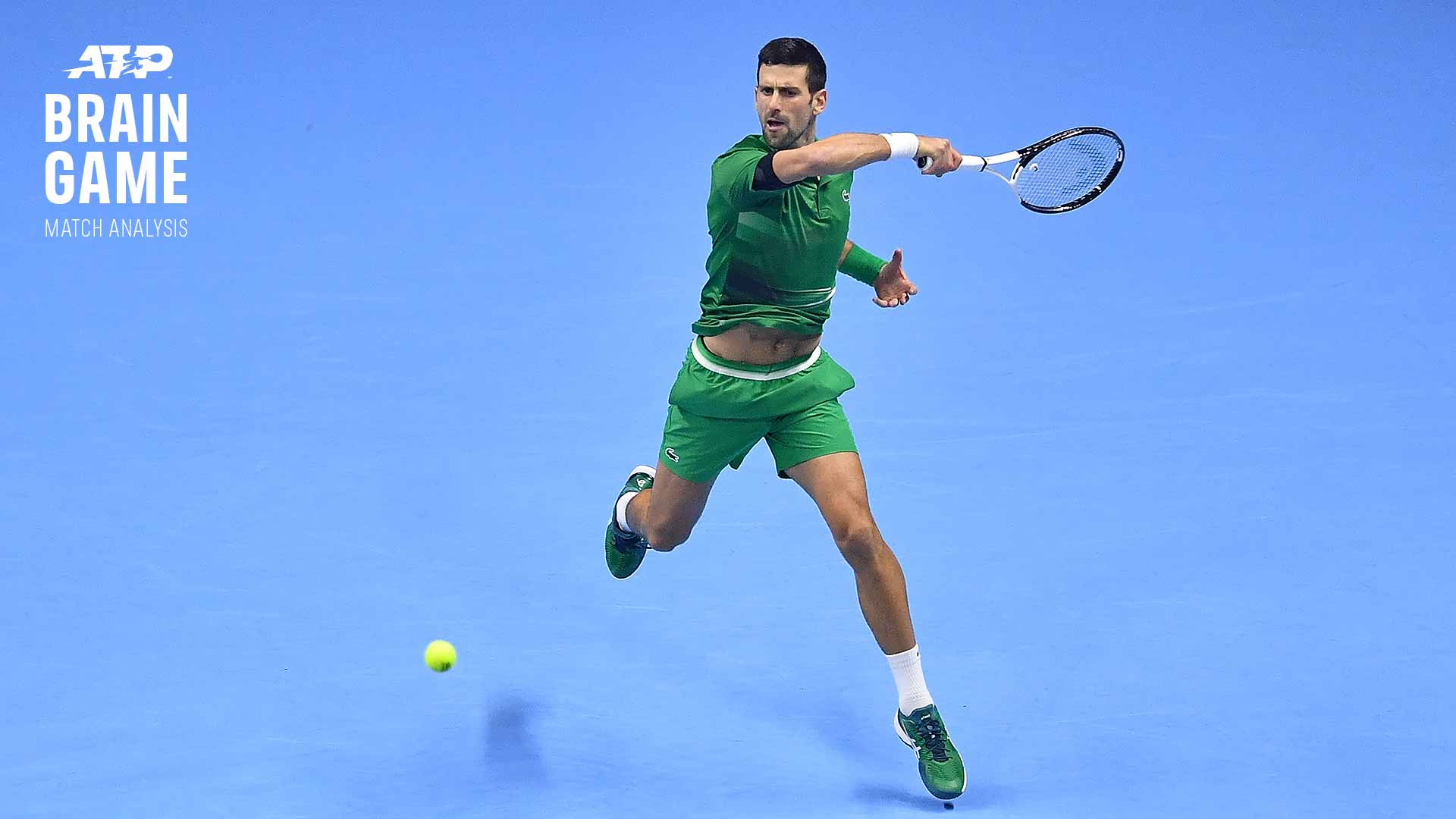
Run-around forehands > backhands.
Novak Djokovic defeated Casper Ruud 7-5, 6-3 in the Nitto ATP Finals title match Sunday in Turin, with his run-around forehand proving to be the difference-maker from the back of the court. Djokovic is widely thought to have the premier backhand in our sport, but it stood second fiddle to his run-around forehand when he was playing out of the Ad court.
This final was always going to be about control of the Ad court, as that is how Casper Ruud loves to organise his baseline patterns of play. According to Infosys ATP Second Screen, Ruud directed 75 per cent of his backhands cross court through the Ad court and 41 per cent of his forehands.
His goal was to lock Djokovic in the backhand cage and overwhelm him with a copious amount of backhand groundstrokes. It’s a strategy that often frustrates opponents and provides them with few offensive options. It has been a key pattern of play in Ruud’s run to the final in Turin.
Djokovic’s run-around forehand was the perfect antidote.
Overall, 67 per cent of Djokovic’s forehand and backhand groundstrokes were struck standing in the Ad court, which is a testament to Ruud’s Ad court intentions. Djokovic hit 81 backhands standing in the Ad court and 51 run-around forehands. Here’s how they performed:
Djokovic Groundstrokes
• Backhands = 81 (10 errors/5 winners)
• Run-Around Forehands = 51 (3 errors/4 winners)
• Normal Forehands = 65 (6 errors/5 winners)
Djokovic’s backhand performed solidly, ending up -5 with 10 errors and five winners. In the second set, Djokovic only committed three errors from 37 backhands. In fact, he only made one error from his last 25 backhands while collecting one winner and forcing four errors.
Knowing that the run-around forehand was doing the heavy lifting in the Ad court, Djokovic’s backhand came to life late in the match and he hit with more freedom and velocity, particularly down the line to cleverly change directions against Ruud.
The analytics of Djokovic’s run-around forehands were eye-opening. He ended +1 with three errors and four winners from 51 shots. The run-around forehand only committed one error from its last 37 shots while amassing four winners and forcing three errors. It was the engine room that constantly repelled Ruud’s baseline barrage.
History-Maker Djokovic Claims Nitto ATP Finals Crown
Ruud’s baseline game is built on owning the Ad court with a combo of rock-solid backhands and marauding run-around forehands that pull the opponent wide off the court. Djokovic was able to throw a wrench into Ruud’s plans by cracking 51 run-around forehands and switching strategic gears to actually be the one hunting his opponent’s backhand.
Djokovic’s master plan to secure victory at the finish line was to not donate any free points to Ruud. The Serb made his last 10 forehand groundstrokes (normal & run-around) as well as his last 10 backhand groundstrokes. With history on the line, Djokovic has built his legend on smothering defense as well as finding ways to inexplicably draw errors from his opponents.
It felt like the match was on a razor’s edge from start to finish but Djokovic ended up winning a commanding 57 per cent (64/112) of points to Ruud’s 43 per cent (48/112). Djokovic won more points serving (44-37) and more returning (20-11).
Overall, Ruud played to his strengths and employed the same game plan that got him to the final. The problem for the Norwegian was that person standing on the other side of the court knew the playbook and had an ideal counter plan.
Credit : Source link






